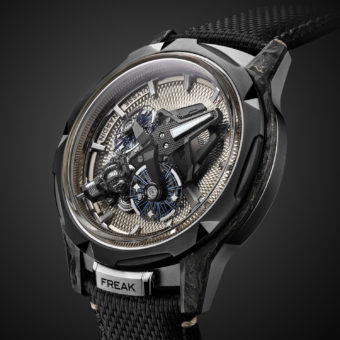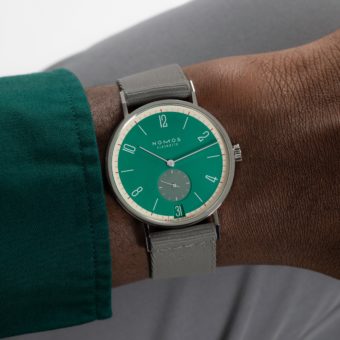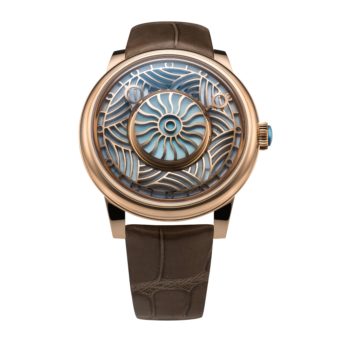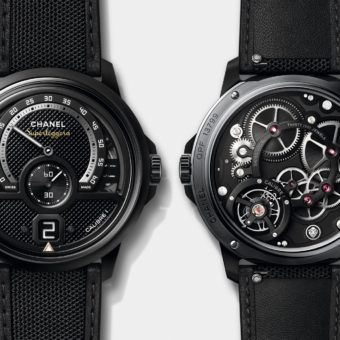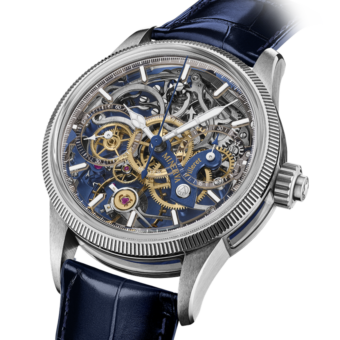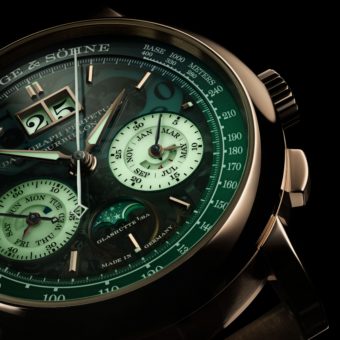Ulysse Nardin’s most significant announcement at SIHH this year was the launch of the new Freak Vision, a revamped version of its most famous — and at the same time most off-the-wall — timepiece, the groundbreaking Freak. This week, the Swiss manufacture with its identity firmly rooted in nautical timekeeping released two one-of-a-kind Freak Vision watches with decorative faces that evoke the maritime beauty of Australia’s Coral Bay snorkeling reef. Here’s what you need to know about the Freak Vision Coral Bay models and the first-in-horology artistic techniques used to create them.
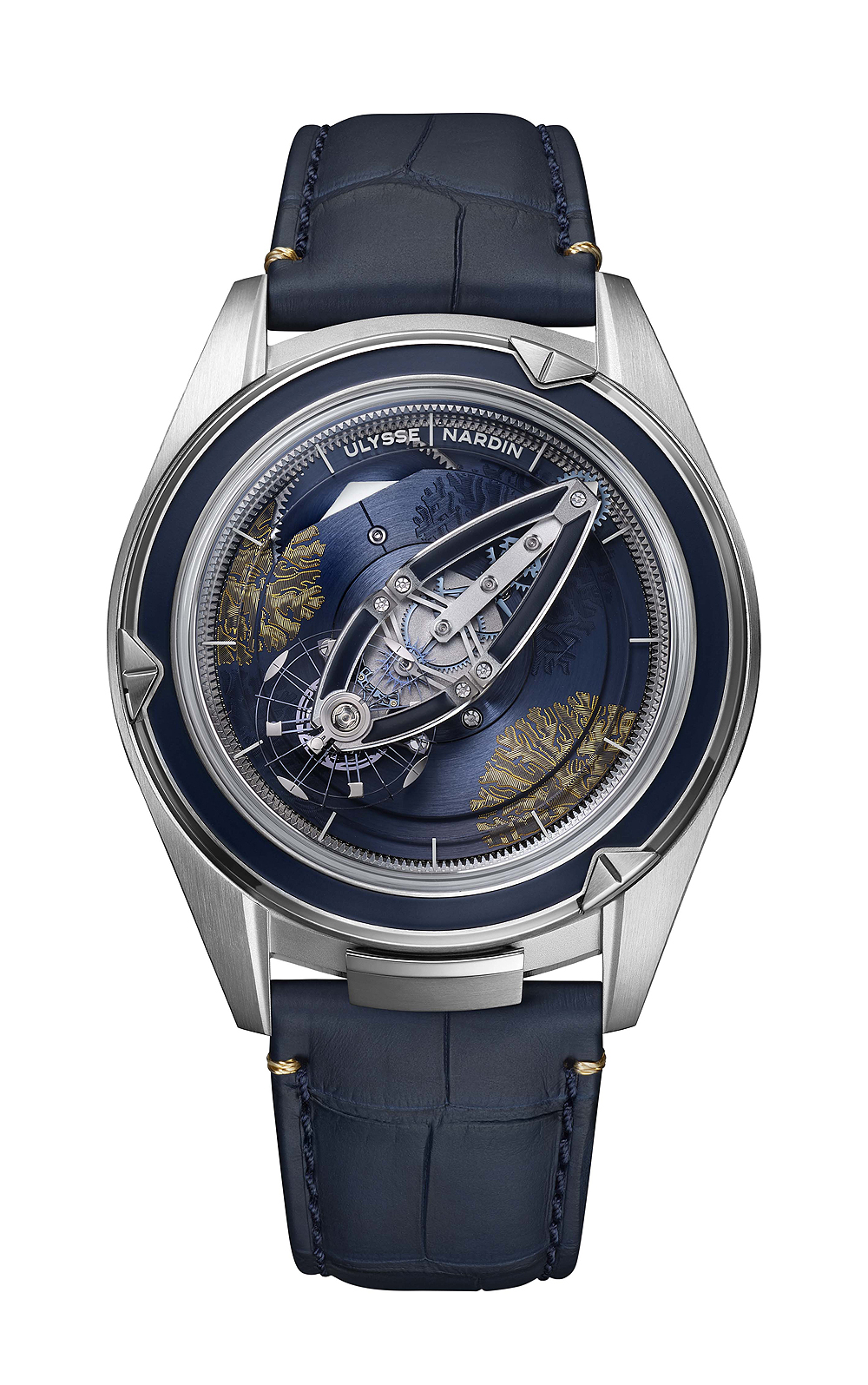
To create the first of the Coral Bay pieces, Ulysse Nardin’s watchmakers turned to an electronic technique called bonding, in which thousands of 24k gold threads are employed to create a meticulous decorative motif. The watch’s golden coral reef patterns, which are applied directly to the movement’s barrel spring bridge, start with a bonding machine squeezing gold threads of different sizes, one after another, to “draw” the motif; each thread is tied at the top and bottom but not in the center. The artisans then use a chemical vapor disposition (CVD) process to color the entire surface of the bridge blue, except for the departure and arrival points of the yellow-gold threads, which are laser-cleaned. When this process is completed, the threads are bonded to the now-blued surface of the component.
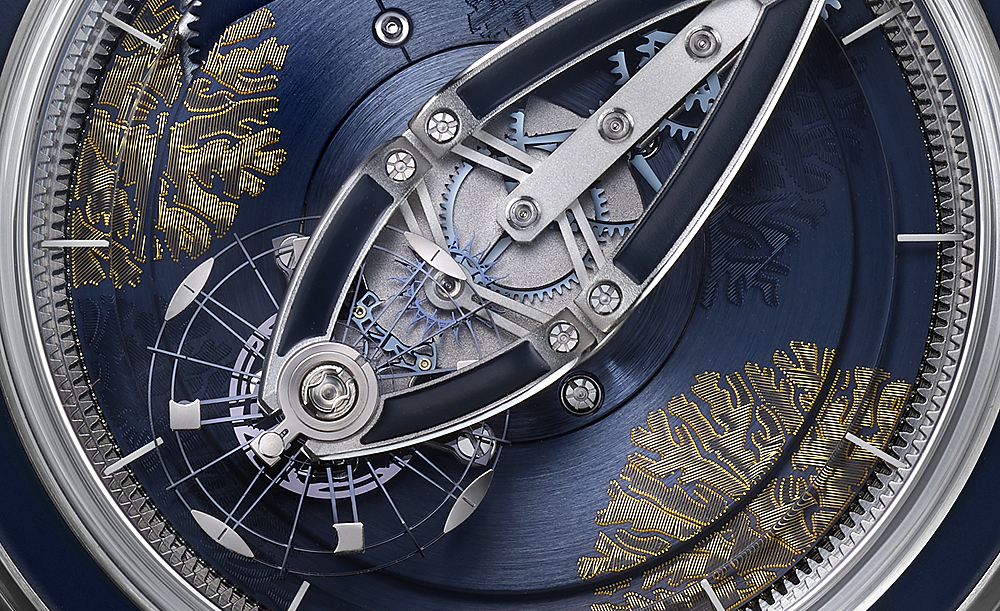
The second Coral Bay edition, with its even more eye-catching red-and-blue face, showcases a miniature painting technique. Red and white acrylic paints are applied to the CVD-treated blue surface of the barrel bridge. After mixing and applying the colored lacquers directly on the “dial” of the watch, this component is then heated in a 90-degree oven between each color application, which allows the colors to dry and remain firmly in place. Minuscule details like the highlights on the coral branches are hand-colored under a magnifying glass by extremely fine brushes. The finished product requires, Ulysse Nardin says, about 20 hours of painting.

As in the regular-production Freak Vision model introduced at SIHH, these two unique pieces are powered by Ulysse Nardin’s Caliber UN-250, which features a host of avant-garde technology that was developed in the brand’s concept watches over the years, such as the extra-lightweight silicon balance wheel with nickel mass elements, self-regulating silicon micro-blades, a 3D-carved upper bridge inspired by a boat’s hull (a nod to UN’s historical role as a maker of marine chronometers), and the Ulysse Nardin anchor escapement with “grinder” automatic winding system, which connects the oscillating rotor to a frame with four arms, providing twice the torque while limiting friction by means of a flexible guidance mechanism. The movement is self-winding and stores a respectable 50-hour power reserve.

Both Coral Bay timepieces come in 45-mm platinum cases, with blue rubber-coated side inserts, a box-domed sapphire crystal and, of course, the innovative crown-free winding system (via the caseback bezel) and unconventional time display (via the rotating gear train and escapement bridge) that has been a hallmark of Freak watches. Both are mounted on a rubber-like blue leather strap with bar tack loop stitches in either yellow gold (matching the threads of the blue-and-gold “Bonding”model) or red (matching the red coral branches of the blue-and-red “Micropainting” model). Prices are on request, and Ulysse Nardin says that other color combination possibilities “could be explored on demand.”

